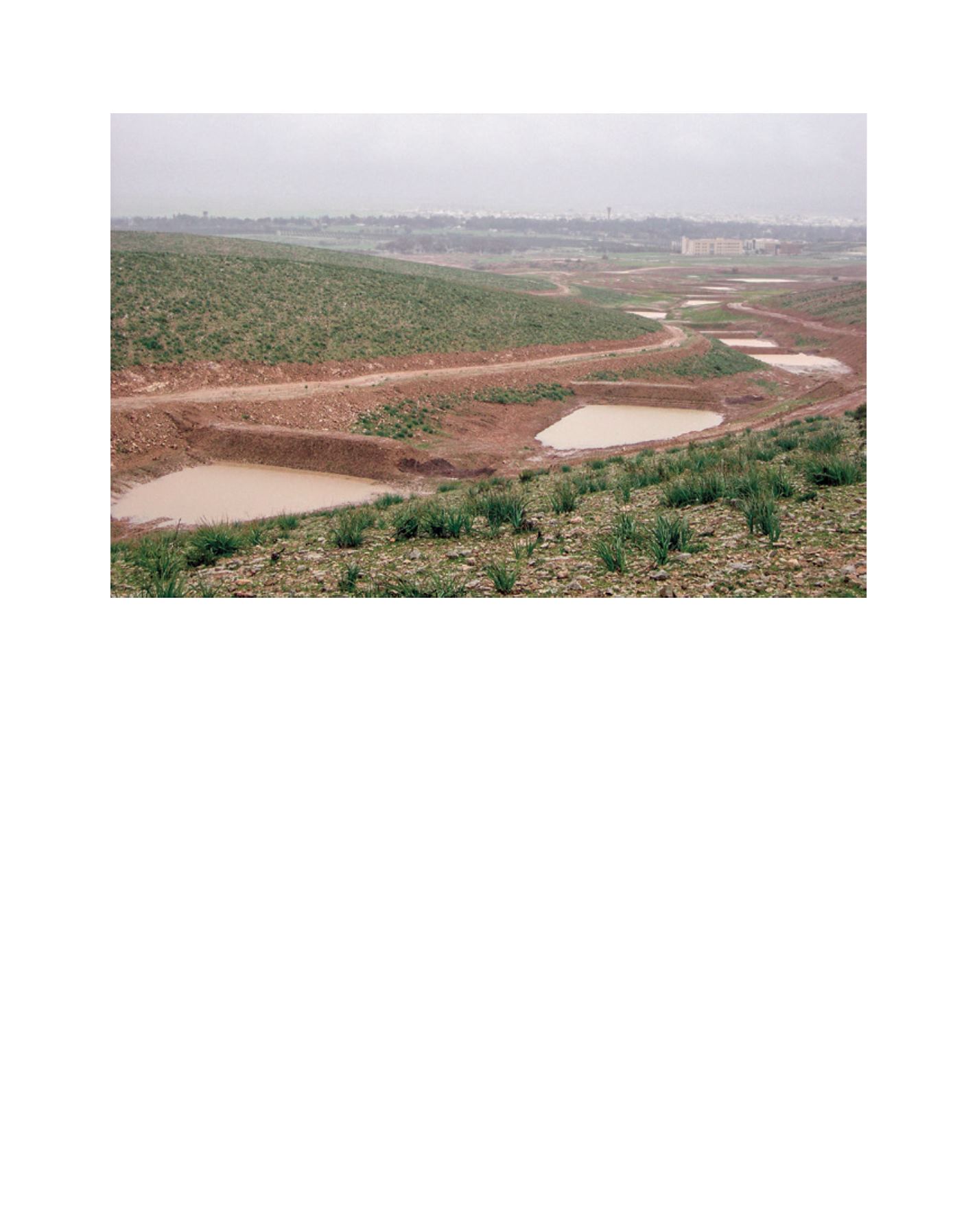

[
] 89
develop theoretical and practical frameworks for restoring
ecosystem functions in highly depredated areas in order to
improve ecosystem services.
This framework views desertification and rehabilitation as
part of a complex socioecological system in which human
activities shape the cultural landscape and create desertified
and rehabilitated novel ecosystems. The framework includes
an ecological perspective that identifies the drivers of deser-
tification and rehabilitation processes in the Northern Negev
and a sociological-landscape perspective that integrates deser-
tification and rehabilitation concepts with cultural landscape
and ecosystem services concepts.
Desertification processes, in the past and present, are
caused by human activities and overexploitation of natural
resources in conjunction with climatic extreme events such
as prolonged drought. The results of these processes are
desertified ecosystems, seen in Israel in the Northern Negev
region, characterized by a high level of system degradation
as determined by indicators for soil erosion, water loss and
primary productivity.
Research in earth and ecological sciences discovered the key
processes that shift water-limited ecosystems from the state
of desertification to rehabilitation. In a healthy and functional
state, the main mechanism by which water-limited ecosys-
tems conserve and use water, soil and biological resources is
through redistribution of rainfall via changes to surface run-off
absorbed in woody plants patches. The woody plant patches,
which capture and retain surface run-off, function as localized
‘resource sinks’ and create resource-enriched patches. These
patches, enriched with water and soil resources, exhibit rela-
tively high biological productivity and diversity.
Desertification drivers, such as grazing and drought, cause a
significant reduction in run-off ‘sinks’ made of woody vegeta-
tion, resulting in reduced water conservation and increased
water leakage. As a consequence of changes in the water flow
and its spatial distribution, soil erosion increases and biologi-
cal productivity and diversity decreases. This trajectory in
ecosystem dynamics — the transition from conservation to
loss of resources — leads to a state of ecosystem degradation.
The degradation state affects landscape functions which
provide ecosystem services in the Northern Negev by creating
a novel set of ecosystems in which the dominant component is
a biotic soil crust that replaced the woody plants. This compo-
nent prevents water conservation in the form of soil moisture
and leads to increased water loss as surface run-off. The
novels ecosystems differ in form and function from the woody
dominated ecosystems that existed prior to human habita-
tion in the Northern Negev. The current degraded ecosystems
were formed over thousands of years, and were affected by
the physical and biological changes that resulted from diverse
and wide-ranging human activities. These novel desertified
ecosystems function, but human history has shaped them to
a low functional level as expressed by their reduced ability
to store system resources and transport them to the biotic
elements for ecosystem production. Presently, desertified
ecosystems in the Northern Negev are characterized by a high
Image: Itshack Moshe
Water harvesting plays a major role in sustainable afforestation in Northern Negev’s arid zone
L
iving
L
and
















